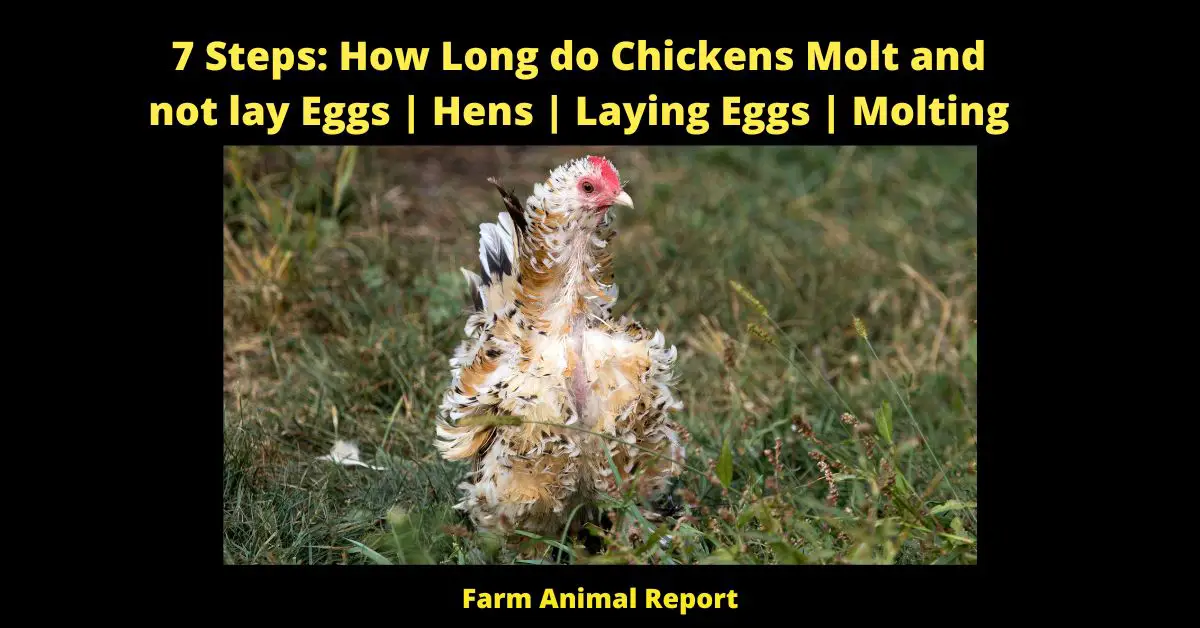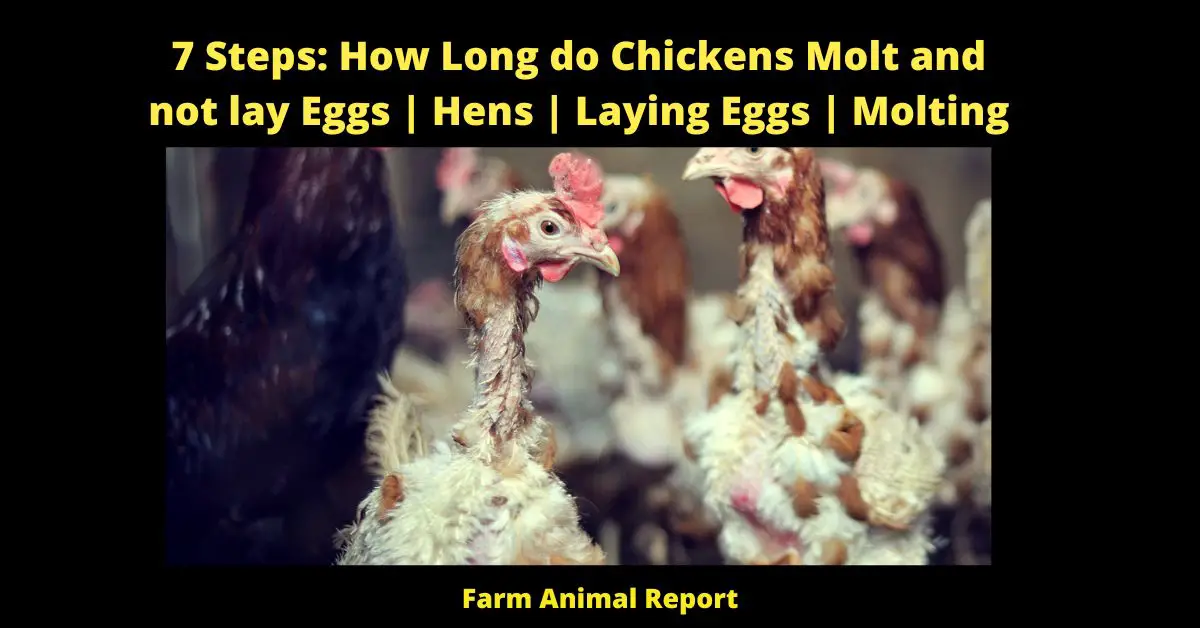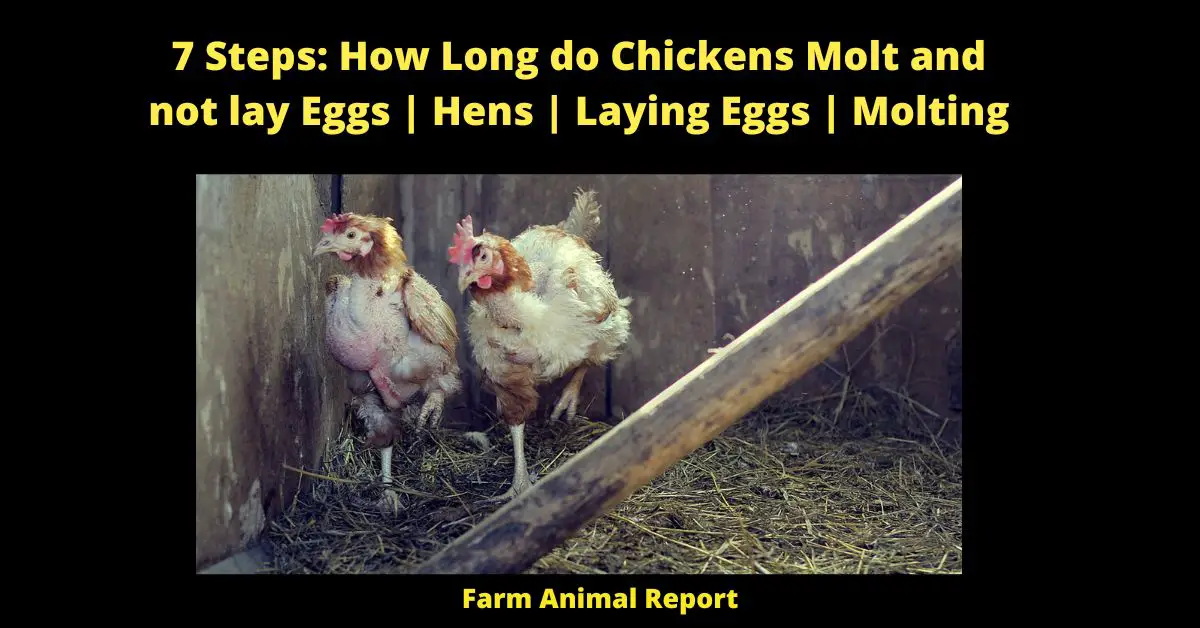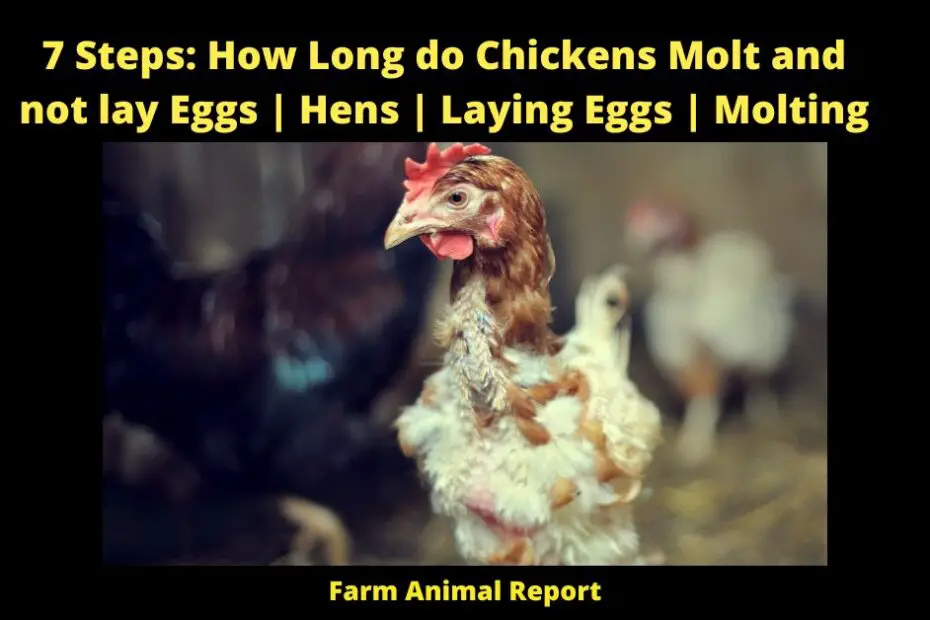Do you have a chicken coop and are wondering how long your chickens will go without laying eggs? All hens stop laying eggs for a time during molting. This is a natural process that all birds do in order to replace their old feathers with new ones. In this blog post, we will discuss how long chickens typically molt and how to keep your flock productive even while they are molting.
How Long do Chickens Molt and not lay Eggs?
The process of renewing feathers can take a while, so chickens may not lay eggs during this time. Chickens usually start to molt in the late summer or early fall, and the process can last for several weeks. How Long do Chickens Molt and not lay Eggs?
Molting is a natural process that all birds undergo and it is necessary for their health and well-being. Adult chickens usually molt once a year, but sometimes they will molt twice or even three times a year.
The process of molting generally occurs slowly, with feathers being shed one at a time. Chickens must retain some feathers in order to regulate their body temperature and keep themselves dry. The number and area of feathers that are shed vary from bird to bird.
In some cases, chickens will stop laying eggs during the molting process. This is because the energy that the bird would normally use to produce eggs is instead used to replace its lost feathers. Most chickens will start laying eggs again once they have completed the molting process.

What is Molting Process in Chickens?
Molting is the periodic replacement of feathers by shedding old feathers while producing new ones. Feathers are dead structures at maturity that are gradually abraded and need to be replaced. Adult birds molt at least once a year, although many molts twice and a few three times each year.
It is generally a slow process as birds rarely shed all their feathers at any one time; the bird must retain sufficient feathers to regulate its body temperature and repel moisture. The number and area of feathers that are shed vary.
In some molting periods, a bird may renew only the feathers on the head and body, shedding the wing and tail feathers during a later molting period. Some species of bird become flightless during an annual “wing molt” and must seek a protected habitat with little disturbance during that time.
Many people believe that chickens must be completely feathered in order to lay eggs, but this is not the case. Chickens will lay eggs regardless of their feather status, although they may do so more slowly if they are molting.
So what is molting? Molting is the periodic replacement of feathers by shedding old feathers while producing new ones. Feathers are dead structures at maturity that are gradually abraded and need to be replaced.
Adult birds molt at least once a year, although many molts twice and a few three times each year. Chickens will lay eggs regardless of their feather status, although they may do so more slowly if they are molting.
What is Forced Molting?
Forced molting is the process of artificially stimulating feather replacement in adult birds. It is used as a management tool to improve the quality or quantity of poultry meat or eggs.
Forced molting can be done by withholding food, water, or both from the birds for a set period of time. It is also done by exposing the birds to environmental stressors such as low temperatures or high levels of light.
Forced molting is controversial because it can be very stressful for the birds and can lead to death in some cases.
What is the Best Diet for Your Chickens when Molting?
There is no one “best” diet for chickens during the molting process, as each bird will have different needs depending on the stage of molt it is in. However, there are some general guidelines that can help ensure that your chickens are getting the nutrients they need during this time.
First and foremost, make sure your chickens have access to plenty of fresh water. They will also need plenty of protein to help them grow new feathers, so provide them with a diet that is high in animal-based proteins.
Grain-based diets may not be adequate enough to meet their nutritional needs during molting. Additionally, you can give your chickens supplements like vitamin A and E to help them along.
Overall, it is important to remember that chickens will typically molt regardless of what you feed them, so providing them with a balanced diet is always important. If you are concerned about your chickens’ nutritional needs during molting, consult with your local veterinarian or poultry expert for more specific advice.

What is the Chickens Molting sequence?
The molting sequence for chickens is as follows: Chickens will first lose their primary feathers, which are the large feathers on the wings. Once the primaries have been shed, the chickens will lose their secondary feathers. Once the secondaries have been shed, the chickens will lose their tertiary feathers. Finally, the chickens will lose their contour (or body) feathers.
- Head
- Neck
- Back
- Breast
- Stern
- Thighs
- Wings
- Tail
Signs of impending Molting
Birds that are about to molt will often lose feathers in clumps. A bird losing feathers in clumps is a sign that it is about to molt. Feathers that are being replaced are often smaller than the feathers that are being lost. This can often be seen in birds that are molting their primary feathers.
The tips of the replacement feathers will be narrower than the feathers they are replacing.
Another sign of impending molting is when a bird’s appetite changes. A bird that is usually very active and eats a lot may suddenly become inactive and not eat as much as usual.
This change in behavior is due to the fact that a bird’s body is using a lot of energy to molt.
The last sign of impending molting is when a bird’s plumage becomes ruffled.
The feathers will not lie flat against the body and will often stick out at odd angles. This happens because the new feathers are not yet fully grown and have not taken on their final shape.

Methods of inducing Molting
There are three main methods of inducing molting in birds – natural, environmental and pharmacological.
Natural molting is controlled by the bird’s internal hormones and occurs mainly in response to changes in the length of daylight hours. Environmental molting is caused by factors such as temperature, humidity, and nutrition, while pharmacological molting is stimulated by the use of drugs.
The most common way to induce molting in birds is by using a drug called amprolium. Amprolium works by inhibiting an enzyme called thiaminase, which is involved in the normal breakdown of vitamin B1 (thiamine). When this enzyme is inhibited, the level of thiamine in the blood rises and this triggers the molting process.
Another drug that can be used to induce molting is chloramphenicol, which works by inhibiting protein synthesis. This drug is mainly used to treat infections in birds, but it can also be used to induce molting.
The third drug that can be used to induce molting is corticosteroids. Corticosteroids work by suppressing the immune system, which results in a rise in the level of corticosterone in the blood. This hormone then triggers the molting process.
Effects of Molting on hens
Molting has a number of effects on hens. First, during a molt, a hen’s egg production drops as she replaces her feathers. In addition, a hen’s body weight may drop as she consumes more protein to build new feathers. Finally, a hen’s immune system may be weakened as she molts, making her more susceptible to disease.
Molting can have a number of effects on hens. Most notably, molting can dramatically reduce egg production. Hens that are in the midst of a molt will often stop laying eggs altogether, and those that continue to lay eggs during a molt typically produce eggs that are smaller and lower in quality than usual. In addition, molting can make hens more susceptible to disease and predators and can cause them to lose significant amounts of weight.
Care of hens during Molting
Molting is an important process for birds that helps keep them healthy and looking their best. However, it can also be a challenging time for hens as they lose feathers and can’t fly. During this time, it’s important to provide extra care to your hens to make sure they stay healthy and comfortable.
One way to help your hens during molting is to make sure they have plenty of food and water. Hens need more protein than usual when they’re molting, so make sure you’re feeding them a diet that is high in protein. You may also want to give them some extra treats, such as fresh fruits and vegetables.
Another way to help your hens during molting is to make sure they have a warm place to sleep. Molting can be quite uncomfortable for hens, so it’s important to provide them with a place where they can rest without feeling too cold or too hot.
Finally, be sure to keep an eye on your hens during molting and contact your veterinarian if you notice any signs of illness or distress. Molting can be a trying time for birds, but with a little extra care, your hens will be able to get through it just fine.
The value of forced molting
While molting is a natural process that all birds undergo, it can also be forced in commercial chicken farms. There are several reasons why forced molting is used on these farms. The most obvious reason is that it helps to increase egg production.
When chickens are forced to molt, they lose their feathers and become very weak. This makes them unable to fly or roost and forces them to stay on the ground where they can be more easily monitored and fed.
The lack of energy caused by the molt also makes the chickens less interested in mating, so there is less chance of them getting injured or becoming sick while trying to mate.
Another reason why forced molting is used in commercial chicken farms is that it helps to get rid of parasites that might be living in the feathers or skin of the chickens.
Molting also causes the chickens to lose weight, which makes them less susceptible to disease. Finally, molting can help to reset the immune system of the chickens, making them more resistant to future infections.
How to Stop a Hen from Laying Eggs
1) One way to stop a hen from laying eggs is to keep her in complete darkness for at least 14 hours a day. This will disrupt her natural laying cycle and she will eventually stop laying eggs.
2) Another way to stop a hen from laying eggs is to reduce the number of daylight hours she is exposed to. If she is only exposed to daylight for 8 hours per day, she will stop laying eggs as she will not receive the necessary light stimulus to continue production.
3) You can also stop a hen from laying eggs by covering her cage with a dark cloth. Again, this will disrupt her natural laying cycle and she will eventually stop laying eggs.
4) A fourth way to stop a hen from laying eggs is to reduce the amount of food she eats. A hen that isn’t getting enough nutrition won’t be able to produce eggs.
Final Thoughts – How Long do Chickens Molt and not Lay Eggs
The molting process varies but normally takes two weeks or longer.
- Egg Production May Stop
- Chickens will lose their Feathers in a sequence so that their feathers are Replaced with New Ones.
- This is completely Natural
- And Molting can Be forced
God Bless Greg





